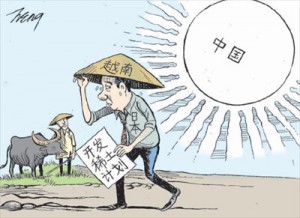Around the Diaoyu Island incident, which the Japanese government want to “buy” it, Sino-Japanese relations are pushed to the cusp. Both the political and the military and civil are in the intensive position. The incident indicates that Sino-Japanese relations may be the secondary fell ravine since the normalization of diplomatic relations.
Under the domestic political and social pressure, China take counter-measures is inevitable. The Sino-Japanese friction is caused by the Diaoyu Islands issue. The future core will be around the actual control over Diaoyu Islands. If the counter-measures can make Japan on the the so-called “actual control” Diaoyu Islands bathing, that China will be a major achievement. More likely, the two sides stay in the “cold stalemate” and” cold confrontation state around the Diaoyu Islands. The two sides show “light muscle” each other and even occure “physical contact” class ocean surveillance ship collision, but it may not develop into a military conflict.
If the Military conflict is temporarily impossible, it is more possible that the counter-measures is economic sanctions, which is more viable than the military conflict, and the impact will be larger and more lasting. Japan Canon’s global strategy, research director of the Institute Seto mouth Kiyoyuki admits: the most worried about is that the Chinese Government is considering the restricts of economic policy. If China really started to economic sanctions against Japan, how deep the impact will be in the LED lights future lighting area?
At first, Sino-Japanese trade will be greatly affected. Since 2007, China became Japan’s largest trading nation. Today, China still remains the largest future lighting trading partner of Japan, the largest export market and source of imports. According to the statistics of the Japan External Trade Organization (JETRO), Japanese trade volume in 2011 reached $ 344.9 billion, of which $ 183.4 billion of imports from China and Chinese exports of $ 161.4 billion;
Second, China holds a large number of Japanese government bonds.According to the Japanese Ministry of Finance, Japan’s central bank announced the international balance of payments statistics show that the amount of Japanese government bonds held by China is rapidly expanding, the holding reached the highest in the history of the 18 trillion yen up to the end of 2011, representing an increase of 71% over last year.
Third, the Chinese travel to Japan may be substantially reduced.
Fourth, China is an important investment area in Japan.
Fifth, the strategic resources is also capable “economic card” to restraint in Japan.


